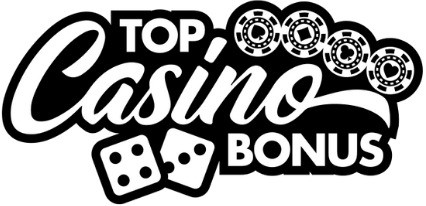Can casino loyalty programs actually give you an edge
When it comes to squeezing every drop of value out of a casino visit, loyalty programs are often overlooked by newcomers and even seasoned players stuck in old habits. There’s this notion floating around that loyalty points and tier statuses are nothing more than gimmicks dangled to justify your losses. I hear it all the time — “It’s just breadcrumbs after they take your stack.” But that’s the surface-level take, usually born from folks who never took the time to dissect the mechanics behind these programs. Truth is, if used right, a casino loyalty program can swing the house edge a few ticks in your favor — not enough to break the casino, but just enough to grind smarter.
Table of contents
How loyalty programs are structured and what matters most
Loyalty programs are not all cut from the same cloth. The structure varies significantly from one operator to another, but most are built on a points-per-dollar model — and that’s where it starts getting interesting. What a lot of players don’t realize is that the redemption rate, the tier bonuses, and how different games contribute to points all have outsized impact on whether you’re getting scraps or value worth chasing. For example, slots usually generate full point value per dollar wagered, while table games often give just a fraction — sometimes as little as 10%. In many brick-and-mortar setups, video poker played optimally can yield up to 0.5% in comp returns, sometimes more with tier multipliers. That’s not trivial. That’s edge-defining. To understand how these programs are structured and what to look for, check out this detailed overview of casino loyalty systems and how they can be leveraged to your advantage — you can find it in the [Casumo casino overview](https://www.topcasinobonus.com/casino-review/casumo/).
Tier climbing and VIP benefits
Reaching higher tiers isn’t just vanity — it’s leverage. I’ve seen mid-tier VIPs get losing days wiped off the books with discretionary comps and cashback offers behind closed doors. You won’t find those perks listed in the welcome brochure. The key is consistency — casinos reward predictability. You give them recurring volume; they give you enhanced rewards like faster comp accumulation, priority withdrawals, room upgrades, and even loss rebates. Just compare what serious VIP programs like those reviewed in this Casumo casino overview offer, and you’ll notice how top-tier players live in a different ecosystem entirely.
Spotting bad loyalty programs and red flags
Not every program is worth your buy-in. Some casinos design loyalty systems with breakpoints that are nearly impossible to reach unless you’re wagering to the bone. Others use opaque calculations where $1 wagered equals 0.001 points — and it takes 10,000 points to get a sandwich. It’s critical to read the fine print. Look out for programs that have short expiration windows on points, don’t count all games toward tier progress, or require astronomical volumes for meager returns. A proper program should return at least 0.1% in usable value on conservative play, with room to climb toward 1% at higher tiers — anything less is window dressing.
Stacking values with offers and promo strategy
Here’s where real edge comes into play: strategic stacking. Savvy players align their play with promotions, opt-in bonuses, and tier acceleration periods to multiply the return on their action. Combine that with payment methods that minimize fees (like the ones listed on this casino banking page), and suddenly, you’re not just playing — you’re leveraging every dollar. One of my students used this approach at a Vegas property and turned a break-even video poker month into a $1,200 positive swing purely through comped suites, show tickets, and bounce-back cash.
The discipline behind maximizing rewards
But here’s the catch — and it’s a big one — you don’t chase loyalty benefits blindly. That’s a rookie mistake. Bad programs encourage overplay. Smart ones reward precision. The edge you extract from rewards is only useful if you’re already playing disciplined games like low-house-edge table games, or combinatorically sound video poker. If you’re playing loose, the rewards won’t save you — they’ll just slow your bleed. That’s something most players don’t get until they’re knee-deep in losses. Just like in poker, where many fall into costly traps covered in this guide on common mistakes in casino poker, understanding structure beats raw aggression every time.
Surveillance and player valuation
Let’s not forget — every casino tracks you, and not just for the card counting bogeyman. Surveillance systems — covered extensively in this casino surveillance guide — measure session duration, action size, volatility exposure, and play speed. That data feeds into your player profile and affects how your comps and rewards are generated. The smarter your play appears to surveillance, the more the system adjusts your theoretical loss, which is what benefits are pegged to. Random play gets you junk comps. Calculated play — even at low stakes — earns trust and benefits that build over time.
Final reflections from the felt
Loyalty programs aren’t magic. They won’t flip the odds or change games with built-in house edges. But when used with surgical intent, they can tip the scales — not into profit on every grind, but into margins that make a long-term difference. Especially for players sticking to +EV strategies and avoiding emotional tilt. Loyalty is a two-way street. You bring disciplined play and consistency to the table, and the casino — if you’ve chosen the right one — should reward that with more than just a buffet coupon. Be skeptical, track your results across programs, and remember — the programs are systems, and systems can be maneuvered. Maybe not gamed entirely… but definitely tilted slightly in your favor.


0 Comments